While summer in Pittsburgh promises leisurely days at the beach and warm star-lit nights, it is also a happy, show-and-tell time for the creepy critters that live within our midst.
After hiding out all winter, they are now in full force and ready to reappear in our homes and backyards, wreaking general havoc with outdoor and indoor activities and our general health.

The five most wanted culprits (or in this case, unwanted) are: ants, bees, wasps, American cockroaches and ticks.
Below is more information on each of these pests, not necessarily in order of importance.
1. Ants
Odorous House Ants get their name from the fact that they emit a smell like rotten coconuts when crushed.
They are known to utilize branches and plants to gain ingress to a residence and once inside, seek out moisture sources and nest inside wood damaged by termites.
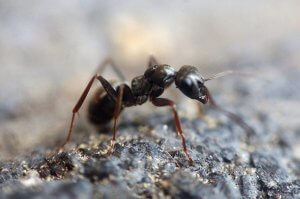
They can be difficult to eliminate and will require the expertise of the pest-control and pest-maintenance specialists at Pestco.
If not stopped, this species can overtake living spaces where there is food and moisture, such as kitchens and bathrooms.
Little Black Ants are problematic because the small size of their nests can make them difficult to spot.
These ants feed upon sugary or fatty foods including candy, fruit, grease, oil, and meats.
In Pittsburgh homes, they usually nest in wall voids and decaying wood.
They do have stingers but they are too small and weak to pose any threat to either humans or pets.
The moniker bestowed upon Pavement Ants derives from the fact that this species nests in or under cracks in pavement.
They will eat anything they come across, including bread, meats and cheese, and they are known to forage for food following trails of up to 30 feet.
Pavement ants are found in ground-level masonry walls but have also been known to nest in insulation and underneath floors.
2. Bees
The matter of eliminating bees is a double edged sword because of the fact that bees are beneficial to mankind and planet Earth.
They can become a nuisance however, if they build their hives too close to a Pittsburgh home.
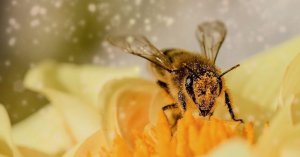
The best way to remove them is to let the pest-control and pest management specialists at Pestco relocate the hive.
This is not recommended as a do-it-yourself project.
The three most common bee species in the United States are honey bees, bumblebees, and carpenter bees.
3. Wasps
Wasps are hot weather, aggressive pests that tend to live close to humans. Some species, such as yellow jackets, have been known to build nests inside the walls of Pittsburgh homes.
Unlike bees, a single wasp can sting multiple times in rapid succession. In the case of an infestation, it is likely that a Pittsburgh home owner will easily notice the nests, which resemble recycled paper cartons that are layered like envelopes.
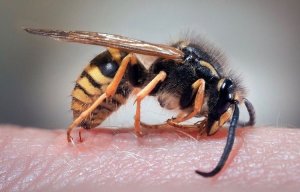
Some wasps’ nests are similar to papier mâché, and they are usually dull brown or grey in color.
Removal of nests are best left to the experts at Pestco, as the chance of being on the receiving end of many painful stings is very high.
4. American Cockroaches
These vile critters generally prefer warm, moist and dark environments with temperatures ranging between 70 and 80 degrees Fahrenheit.
They often gain ingress to homes via hitching a ride on human belongings, arising from the sewer system via drains or or sometimes via mass migration from other nearby structures.
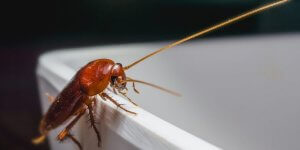
The warmer months of the year usually find them outside Pittsburgh homes in backyards and alleys, but they do venture inside when seeking food or shelter from a sudden change in climate.
These roaches are the bane of even the most carefully maintained restaurants, bakeries, grocery stores, food processing plants and hospitals.
In these locations, they are known to infest food storage and preparation areas, boiler rooms, steam tunnels and basements.
In private residences, they are attracted to kitchens, bathrooms, basements or laundry rooms where they seek out food and water.
According to the expert pest-control and pest-maintenance specialists at Pestco, these insects gain ingress via doorways lacking weather stripping or basement windows and garages.
While they will eat anything they come across, they have a preference for anything spoiling or rotting.
This can include: crumbs left unknowingly under appliances, in drains, behind kitchen cabinets and on the floor.
They will also eat any pet food that is left uncovered. Outdoors, they search for decaying leaves, fungi, algae and small insects.
5. Ticks
According to fossil evidence, ticks have been biting men, women, children and animals for at least 90 million years, dating back to the Cretaceous Period.
There are more than 800 species throughout the world, but only two families, Ixodidae (hard ticks) and Argasidae (soft ticks), are known to transmit diseases.
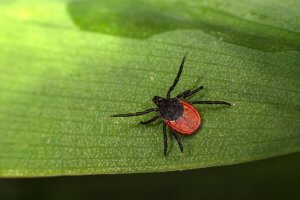
There are four known species of ticks that are problematic in the Pittsburgh area and environs.
These include: the American Dog Tick; the Black-Legged Tick; the Lone Star Tick and the Groundhog Tick.
The American Dog Tick
American dog ticks are the major carrier of Rocky Mountain Spotted Fever and Tularemia.
This species can become greatly engorged while feeding, sometimes reaching the size of an average grape.
In addition to man, the other hosts include: cats; cattle; donkeys; hogs; horses; mules; sheep; coyote; deer; fox; wolf; wildcats; badgers; opossum; rabbits; raccoons; rats; skunks; squirrels; weasels and ground hogs.
The Black-legged Tick
Pennsylvania has the rather dubious honor of being the state with the largest number of reported Lyme Disease cases.
This public health challenge affects every Pennsylvanian, as all 67 counties are known to have black-legged tick populations.
Previously known as the Deer Tick, this species is the primary vector of Lyme Disease.
A recent study of Pittsburgh parks indicated tick density is estimated to be about one tick per every 2 square yards.
The Lone Star Tick
Known to transmit Tularemia and Rocky Mountain Spotted Fever, this hard-bodied tick is active from early spring to late fall.
This species is easy to recognize by the visible white dot on the dorsal shield of the females, which gives this tick its name.
They are found near urban areas and feed on humans and animals, particularly deer.
Lone star ticks can be dangerous because they have a more aggressive nature than other species.
In a frightening aside, they work en masse and seek out animals and humans by crawling toward them in large numbers all at once.
The Ground Hog Tick
Most commonly encountered in portions of western and northern Pennsylvania, this species is also known as the woodchuck tick, and it is the primary vector for Powasson virus which, unlike other -tick-borne diseases, can be transmitted while the tick is attached to the host for as little as 15 minutes!
Its name derives from its preferred host, but these ticks are also sometimes found on birds, small animals and humans.
They are very similar in appearance to Black-legged ticks and it will fall upon our expert technicians at Pestco Professional Services to determine whether it is one or the other.
The Very Best Pittsburgh Pest Control Services
Our pest-control and pest-maintenance specialists at Pestco have been part of the Pittsburgh commercial landscape since 1948.
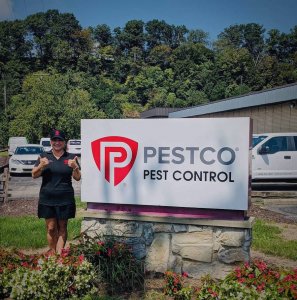
Five-star-rated and family-operated, we have spent almost eight decades maintaining a stellar reputation for superior performance and customer service throughout the Greater Pittsburgh area.
Our effective pest-control and pest-management solutions always begin by locating the source of any infestation.
Based upon their findings, our highly experienced technicians will implement a unique pest control plan that will both eliminate the current infestation and prevent future problems, which will often involves exclusion services.

Pest exclusion is becoming more and more popular for use in residences throughout Pittsburgh and surrounding areas.
This is not just due to environmental considerations, but also because our pest-maintenance experts use fewer chemicals and our services are cost-effective and more efficient than others of their ilk.
The need for pest exclusion is as old as time itself, and it relies heavily on the principle that it is easier and safer for the environment to prevent an infestation than to eradicate one once it has taken over a space.
In Conclusion
Now is the time to fortify your Pittsburgh home against summer invaders.
Call or teams today! We’re here to help.
Photo Credits: Pixabay
 Over 300 Reviews
Over 300 Reviews 